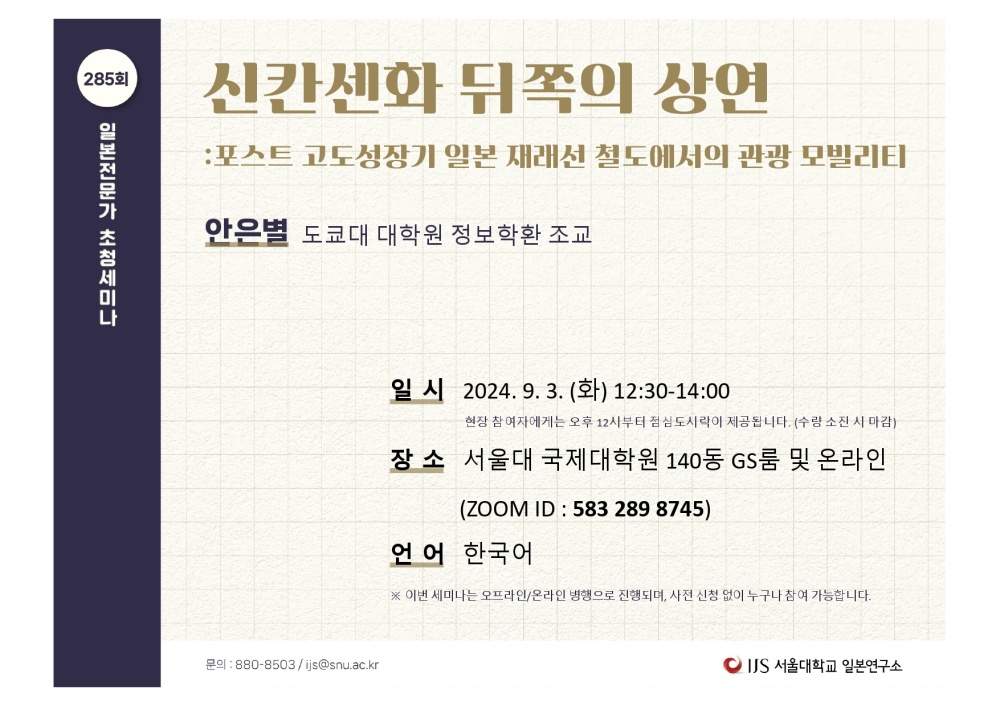
Institute for Japanese Studies (IJS) has been hosting serieses of talks encompassing Japanese politics, economy, cultures and arts. With the experts from Europe, U.S. and Japan, we deliver the talks in multiple languages including Japanese, Korean and English.
We are pleased to host No.285 lecture as a part of Japan Specialist Seminars, titled "Performances Behind the Shinkansen-ization: Tourism Mobility on Japan's Conventional Railways in the Post-High Growth Era"
Date : 2024. 9. 3 (Tuesday) 12:00 - 14:00 (The lecture will start from 12:30)
Venue : SNU GSIS (Bldg 140) GS Room / Zoom
- Zoom ID : 583 289 8745
- Zoom Link : https://snu-ac-kr.zoom.us/j/5832898745
Lecturer : AHN Eun Byul / Assistant Professor, Interfaculty Initiative in Information Studies,Graduate School of Interdisciplinary Information Studies, The University of Tokyo
Title : Performances Behind the Shinkansen-ization: Tourism Mobility on Japan's Conventional Railways in the Post-High Growth Era
In the late 20th century, the Japanese railway system embarked on a high-speed strategy that John Urry called ‘speed response,’ leading to the construction of the Shinkansen with substantial budget allocations. The Shinkansen, as a unique Japanese technology, helped shape national identity and transformed people’s mobile culture and perceptions. Concurrently, the dismantling of Japan National Railways (JNR) and the decline of conventional rail lines progressed, resulting in the closure of many local routes.
This presentation analyzes tourism mobility, one of the significant responses to the decline of conventional railways in the post-high growth era, using the metaphor of performance. The performative approach captures tourism as a continuous process and considers the aspect of mobility phenomena where dominant scenarios imposed from above exist. It also explores how these scenarios are always embodied and possess an additional creative element that cannot be fully reduced to the scenarios themselves.
Specifically, the focus is on two cases: (1) the "complete ride" (完乗) carried out mainly by railway enthusiasts in the late 1970s, and (2) the operation of tourist trains on regional railways in the 2010s. The discussion will examine how these playful and self-purposed tourist movements on the periphery align with, yet diverge from, the dominant mobility system, and will consider the differences between the two cases in their socio-historical contexts.
Language : Korean
Inquiry : SNU-IJS (880-8503 / ijs@snu.ac.kr)